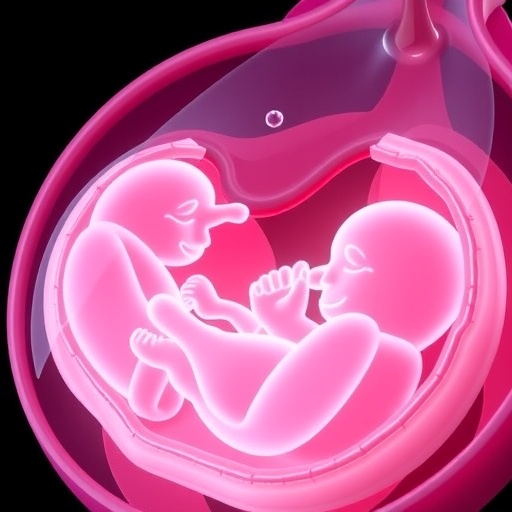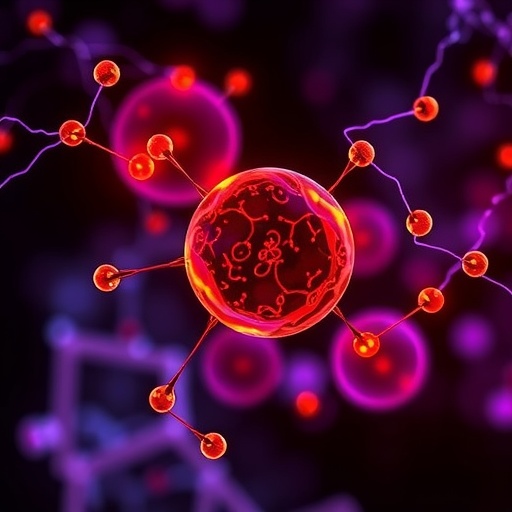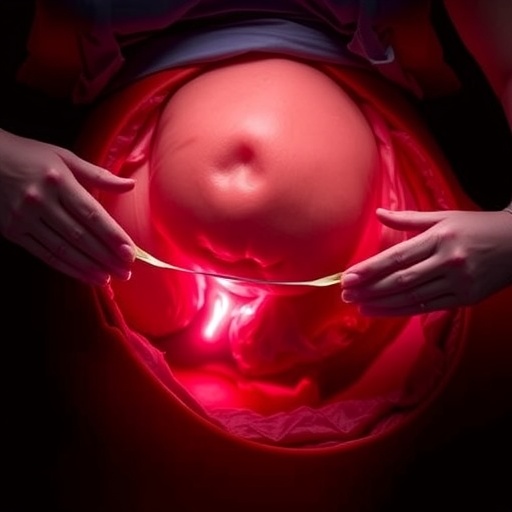As cutting-edge medical technologies continue to advance at an unprecedented pace, one frontier now captivating scientists, ethicists, and neonatologists alike is the development and impending clinical introduction of Artificial Amnion and Placenta Technology (AAPT). Commonly referred to as artificial womb technology, AAPT promises to revolutionize neonatal care by providing life-sustaining support to extremely premature infants in a way that mimics natural gestation outside of the human body. This innovative technology has recently transitioned from successful animal trials to the cusp of first-in-human clinical studies, heralding not only a scientific breakthrough but igniting complex ethical and legal debates redefining the very concept of birth and personhood.
At its core, AAPT represents a sophisticated bioengineering system that replicates the intrauterine environment. Unlike conventional neonatal intensive care units (NICUs) which rely on incubators and ventilators, AAPT envisions a closed fluid-filled chamber mimicking the amniotic sac, coupled with an artificial placenta facilitating gas exchange, nutrient delivery, and waste removal. This technology aims to bridge the precarious gap for preterm infants who are born at gestational ages so early that conventional medical support often fails. Through maintaining fetal physiology outside the womb, AAPT could drastically improve survival rates and long-term health outcomes for infants born as early as 22 to 24 weeks.
Yet with this leap forward comes significant conceptual challenges. One of the most contentious issues concerns the patient’s ontological status during AAPT-supported gestation. Is the infant undergoing this process to be considered a fetus, a neonate, or a new category of existence entirely? Several ethicists argue that current legal and social definitions of birth—which historically hinge on the infant’s passage from the womb to independent life—are no longer adequate. To navigate these uncharted waters, scholars have proposed coinages such as “gestateling” to denote a fetus outside the maternal body sustained by artificial means, or “fetonate,” implying a neonate maintaining fetal physiological conditions yet deserving full human rights.
These terminologies are more than semantic refinements; they bear profound implications for the legal frameworks governing personhood and rights. For example, if “gestateling” were formally recognized, birth might need to be redefined as the moment when the individual transitions from AAPT dependence to autonomous function. Such a shift could impact laws governing viability, reproductive rights, abortion, and neonatal care protocols. The ambiguity over whether a gestateling is more akin to a fetus or a neonate complicates ethical decision-making around consent, end-of-life care, and the recognition of personhood.
This reimagining of birth and existence challenges entrenched societal narratives about human development. The traditional definitions rely heavily on the physical location and biological milestones—being inside the womb qualifies as fetal life, while explusion into the environment denotes birth and independent human life. Artificial wombs disrupt this binary by physically detaching the developing individual from the maternal host while preserving fetal physiology and dependence. The ensuing liminal state demands a reexamination of what it means to be “born,” raising thorny philosophical questions about continuity, dependency, and rights.
One of the central ethical imperatives highlighted by recent discussions is the necessity to ensure that medical innovation, including AAPT, must never come at the expense of the fundamental recognition of personhood. The novel status of gestatelings or fetonates must not be used to diminish the individual’s humanity or rights, whether during the artificial gestation period or beyond. This principle is crucial not only to maintain legal protections but also to uphold the moral integrity of neonatal care practices and societal values concerning human dignity.
In parallel, proponents emphasize that AAPT should be understood foremost as a “means of rescue” rather than a mere technological novelty. The technology is designed to save lives by supporting the development of critically premature infants who would otherwise face grave morbidity or mortality. By positioning AAPT as a life-saving intervention, rather than a speculative or elective procedure, stakeholders seek to justify its ethical integration into clinical practice, aligning with long-standing medical missions to preserve life and alleviate suffering.
The path to clinical adoption for AAPT is fraught with regulatory, procedural, and societal challenges. Researchers must navigate rigorous safety and efficacy assessments, ensuring that the technology performs reliably for human infants without unforeseen harms. Alongside clinical trial protocols, institutional review boards and ethics committees must scrutinize informed consent processes, particularly given the vulnerable nature of premature infants and their guardians. Transparent communication and public engagement will be vital to building trust and acceptance.
Moreover, the socio-legal consequences of redefining birth parameters could ripple into diverse domains such as insurance reimbursement policies, parental rights, and even criminal laws surrounding fetal harm. A comprehensive legal framework accommodating the unique realities of AAPT-supported gestation is indispensable to avoid ambiguity that could hinder access or create inequities in care. Legislators, clinicians, and ethicists must collaborate proactively to craft laws that reflect the evolving bioethical landscape.
The philosophical undertones of AAPT also beckon deeper reflection on human identity and dependency. Traditionally, birth marks a discrete transition from total maternal reliance to a degree of physiological independence. Artificial wombs blur this demarcation by extending the state of controlled dependency into an ex-utero environment. This technological mediation prompts questions about autonomy, personhood’s emergence, and the relationship between biology and social recognition.
Critically, AAPT could transform the experiences of parents of extremely premature infants, empowering them with new options and hope during an often agonizing period of uncertainty. The ability to extend gestation outside the maternal body may offer emotional relief and a sense of agency but also introduces novel ethical complexities regarding parental roles, bonding, and decision-making. Support systems will need to evolve to address these psychosocial dimensions.
The ethical discourse also engages with the broader societal impact of normalizing artificial gestation technologies. Questions are raised about accessibility and potential disparities in who benefits from AAPT. Will such technologies be equitably available, or confined to privileged populations manifesting new social stratifications? The imperative to ensure justice and inclusivity looms large in aligning the development of artificial wombs with ethical commitments.
Scientists and bioengineers continue to push the boundaries of AAPT design, striving for greater biocompatibility, optimized nutrient delivery, and seamless integration with neonatal monitoring systems. Progress in materials science, fluid dynamics, and biomimicry underpins strides toward creating safe, scalable artificial womb environments. The interdisciplinary collaboration of neonatology, bioethics, law, and engineering epitomizes the complexity and promise of this emerging field.
Despite the impressive technical strides, many unknowns persist, particularly concerning long-term outcomes and neurodevelopmental consequences of AAPT-supported gestation. Comprehensive longitudinal studies will be critical to ascertain whether artificial womb environments can sufficiently replicate natural factors vital for healthy development. Only through responsible scientific rigor and humility can the medical community hope to ethically introduce this technology into routine neonatal care.
Looking ahead, the successful ethical integration of AAPT will likely require not just new laws and definitions but also a cultural shift in understanding human reproduction, dependency, and medical intervention at life’s earliest stages. This paradigm challenge offers a unique opportunity for society to reconsider fundamental assumptions while embracing innovation in the service of vulnerable humans. The promise of AAPT echoes a profound aspiration: to extend the boundaries of survival and nurture life at the edge of viability with compassion and respect.
In conclusion, artificial amnion and placenta technology heralds a watershed moment in neonatal medicine and bioethics. While offering transformative potential for saving and improving the lives of extremely premature infants, it also compels a reevaluation of birth, personhood, and our shared moral commitments. The forthcoming first-in-human trials will mark a significant milestone, but the ethical and legal discourse unfolding alongside offers an equally vital journey. Safeguarding human dignity, ensuring equitable access, and redefining our understanding of existence will be pivotal as we navigate this new frontier together.
Subject of Research: Ethical and legal implications surrounding Artificial Amnion and Placenta Technology (AAPT) in neonatal care
Article Title: Defining the threshold of birth: ethical introduction of artificial placenta and artificial womb technology in the neonatal intensive care unit
Article References:
Wozniak, P.S., Fernandes, A.K. & Kukora, S.K. Defining the threshold of birth: ethical introduction of artificial placenta and artificial womb technology in the neonatal intensive care unit. J Perinatol (2025). https://doi.org/10.1038/s41372-025-02456-1
Image Credits: AI Generated
DOI: https://doi.org/10.1038/s41372-025-02456-1
Tags: artificial placenta technologyartificial womb technologybioengineering in medicineclinical introduction of AAPTethics of artificial amniongas exchange and nutrient deliverylegal implications of artificial wombsneonatal care advancementsneonatal intensive care innovationspersonhood and birth ethicspremature infant supportredefining birth concepts





